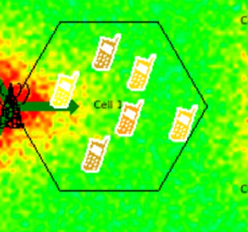
After more than 40 years of operation, DTVE is closing its doors and our website will no longer be updated daily. Thank you for all of your support.
Study throws doubt on LTE Broadcast as DTT replacement technology
 The economics of the use of LTE technology for the large-scale distribution of TV services and as a possible replacement for current digital-terrestrial delivery are not clear and require further study, despite claims by the mobile industry that costs could be reduced by an efficient combination of unicast and eMBMS multicast technology.
The economics of the use of LTE technology for the large-scale distribution of TV services and as a possible replacement for current digital-terrestrial delivery are not clear and require further study, despite claims by the mobile industry that costs could be reduced by an efficient combination of unicast and eMBMS multicast technology.
This at least is the conclusion of a report by the EBU on the delivery of broadcast content over LTE networks, based on a study by EBU Project group CTN-Mobile, the result of a cooperative effort between broadcasters and mobile operators.
According to the EBU report, costing would be crucial if LTE eMBMS were to be considered as a possible alternative to DVB terrestrial broadcasting. The study goes as far as identifying the main elements of a possible cost models but not to the point of making detailed cost calculations. It sounds a sceptical note with regard to claims made by some in the mobile industry that the costs could be manageable.
“Broadcasters remain concerned that the delivery costs over LTE networks may be significantly higher than the current costs of TV distribution. It has been suggested by the mobile industry that the delivery costs of providing broadcast services over LTE may be reduced by an efficient combination of unicast and eMBMS capabilities and as a result of economies of scale that could be achieved,” the report notes.
“However, this has not been investigated in detail. At this point in time the available evidence is insufficient for any conclusion on the issue of costs.”
The report does concede that technically free-to-air delivery “could in principle be enabled by LTE eMBMS” but notes that further study is required. “Thus, the implementation of an LTE network for a large scale TV distribution is not envisaged in the short term,” it says.
Any use of LTE eMBMS would require cooperation by operators as the technology makes it possible to deliver the required TV services only one time in each area served. Services could be delivered unencrypted without the need of SIM card, but services delivered by LTE in unciast mode require a SIM card, and the report says that “associated regulatory, operational and business aspects” of this need to be addressed if free-to-air services are to be delivered over LTE.


